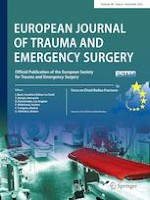Published in:

Open Access
09-07-2022 | Original Article
How to assess applicability and methodological quality of comparative studies of operative interventions in orthopedic trauma surgery
Authors:
Kim Luijken, Bryan J. M. van de Wall, Lotty Hooft, Luke P. H. Leenen, R. Marijn Houwert, Rolf H. H. Groenwold, on behalf of the NEXT Study Group
Published in:
European Journal of Trauma and Emergency Surgery
|
Issue 6/2022
Login to get access
Abstract
Purpose
It is challenging to generate and subsequently implement high-quality evidence in surgical practice. A first step would be to grade the strengths and weaknesses of surgical evidence and appraise risk of bias and applicability. Here, we described items that are common to different risk-of-bias tools. We explained how these could be used to assess comparative operative intervention studies in orthopedic trauma surgery, and how these relate to applicability of results.
Methods
We extracted information from the Cochrane risk-of-bias-2 (RoB-2) tool, Risk Of Bias In Non-randomised Studies—of Interventions tool (ROBINS-I), and Methodological Index for Non-Randomized Studies (MINORS) criteria and derived a concisely formulated set of items with signaling questions tailored to operative interventions in orthopedic trauma surgery.
Results
The established set contained nine items: population, intervention, comparator, outcome, confounding, missing data and selection bias, intervention status, outcome assessment, and pre-specification of analysis. Each item can be assessed using signaling questions and was explained using good practice examples of operative intervention studies in orthopedic trauma surgery.
Conclusion
The set of items will be useful to form a first judgment on studies, for example when including them in a systematic review. Existing risk of bias tools can be used for further evaluation of methodological quality. Additionally, the proposed set of items and signaling questions might be a helpful starting point for peer reviewers and clinical readers.





